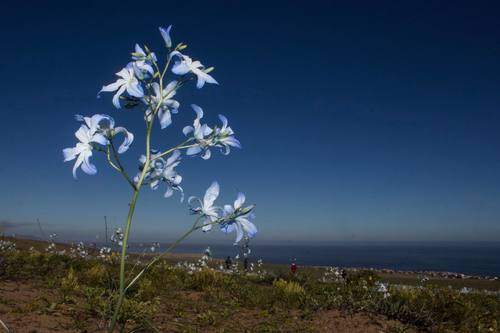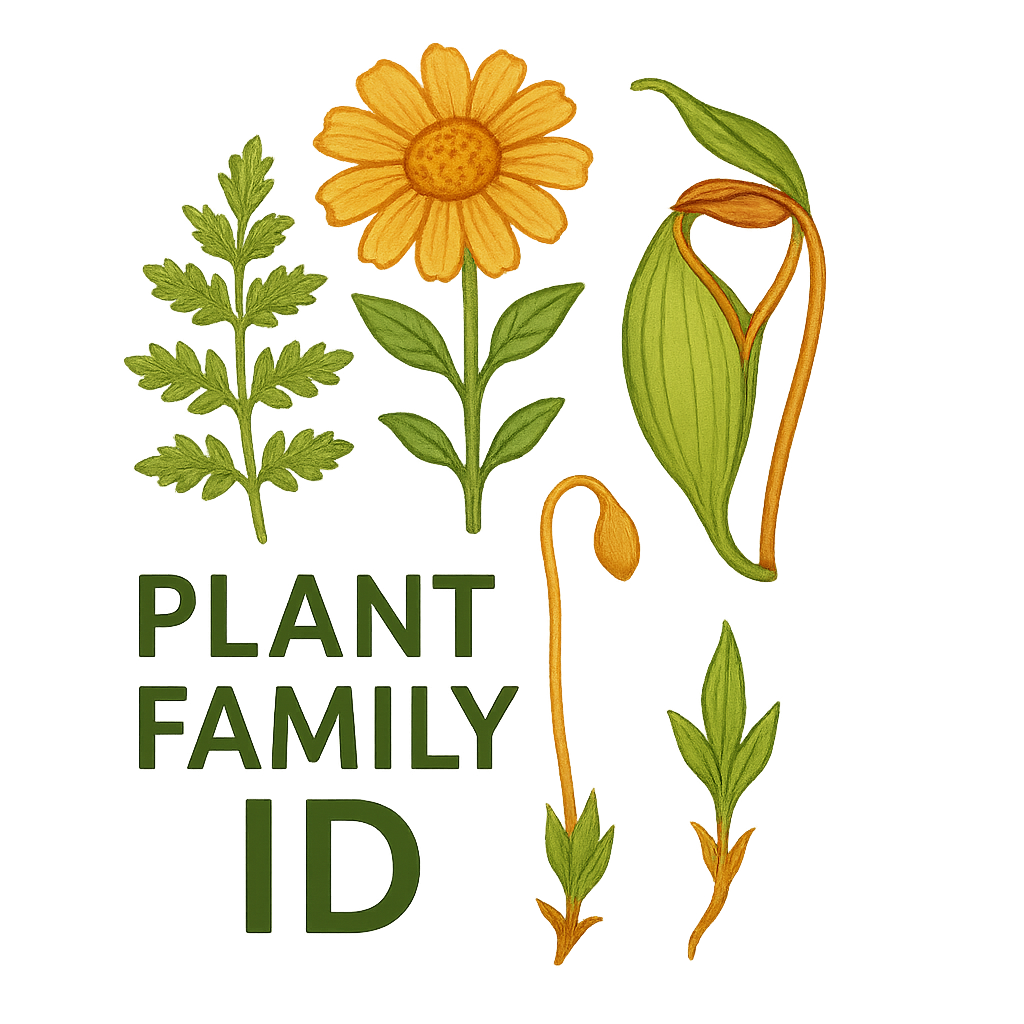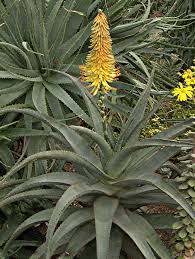Tecophilaeaceae
Chilean Blue Crocus Family
Tecophilaeaceae is a small family of perennial, herbaceous monocots in the order Asparagales, mostly native to the Southern Hemisphere and California. They typically grow from underground corms and are often prized for their showy, brightly colored flowers, particularly the brilliant blues found in some species.

Overview
Tecophilaeaceae is a relatively small family within the large and diverse order Asparagales, which includes familiar groups like irises, orchids, onions, and asparagus. Tecophilaeaceae comprises about 9 genera and roughly 25-30 species of herbaceous plants.
The family exhibits a notably disjunct distribution pattern, with genera found in specific regions of Africa (primarily southern Africa), Chile, and a single genus (Odontostomum) endemic to California. Most species are geophytes, surviving unfavorable seasons via underground storage organs, typically corms. They often inhabit seasonally dry environments like grasslands, scrublands, or rocky slopes, flowering during periods of favorable moisture.
Several species, especially the namesake Tecophilaea cyanocrocus (Chilean Blue Crocus), are highly valued in horticulture for their intensely colored flowers, although some are rare or endangered in the wild.
Quick Facts
- Scientific Name: Tecophilaeaceae
- Common Name: Chilean Blue Crocus family
- Notable Genera: Tecophilaea, Conanthera, Cyanella, Odontostomum
- Number of Species: Approximately 25-30
- Distribution: Disjunct: Africa (mainly southern), Chile, California (USA)
- Evolutionary Group: Monocots - Asparagales
Key Characteristics
Growth Form and Habit
Plants are perennial herbs, typically surviving unfavorable conditions as geophytes via underground storage organs, which are usually tunicated corms (sometimes rhizomes). Stems are generally short or subterranean, with flowering scapes emerging from the corm.
Leaves
Leaves are few, typically basal or arising from the lower part of the stem (cauline). They are simple, entire (smooth margins), usually linear to lanceolate in shape, and possess characteristic monocot parallel venation. Leaf bases often sheath the stem.
Inflorescence
Flowers may be solitary or arranged in terminal inflorescences, typically racemes or cymes (sometimes panicle-like).
Flowers
Flowers are often showy, usually bisexual, and typically actinomorphic (radially symmetrical), though sometimes slightly zygomorphic (bilaterally symmetrical). Key monocot floral characteristics include:
- Perianth: Composed of 6 tepals (petal-like structures, undifferentiated into sepals and petals) arranged in two whorls of three (3+3). The tepals are often fused at the base to form a tube, with spreading lobes above. Colors are frequently bright blue, violet, yellow, or white.
- Androecium: Typically consists of 6 stamens arranged in two whorls. Filaments are often attached to the tepal tube. In some genera, not all stamens are fertile; some may be modified into sterile structures called staminodes, or stamens may be unequal in size or shape.
- Gynoecium: A single inferior or semi-inferior ovary (located below or partially below the attachment point of the tepals), composed of 3 fused carpels. It has 3 locules with numerous ovules arranged on axile placentas. A single style with a 3-lobed or capitate stigma tops the ovary.
Fruits and Seeds
The fruit is a loculicidal capsule, meaning it splits open along the partitions between the locules to release the seeds. Seeds are typically small, numerous, and often dark-colored or black.
Chemical Features
Specific chemical profiles are less defining for identification compared to morphology. Like other Asparagales, they possess steroidal saponins. Some species may contain alkaloids.
Field Identification
Identifying Tecophilaeaceae involves recognizing the combination of monocot features, floral formula, ovary position, and geophytic habit.
Primary Identification Features
- Herbaceous Monocot Habit: Typically growing from a corm.
- Linear/Lanceolate Leaves: Basal or low-cauline leaves with parallel veins.
- Flowers with 6 Tepals: Perianth parts usually similar in appearance, often fused into a tube below.
- 6 Stamens (or fewer fertile): Stamens typically attached to tepal tube.
- Inferior or Semi-inferior Ovary: Ovary located below or partly below the tepals (a key feature).
- Capsule Fruit: Dry fruit splitting open.
Secondary Identification Features
- Showy Flowers: Often brightly colored (esp. blue, violet, yellow).
- Cormous Geophyte: Underground corm usually present.
- Restricted Distribution: Found only in specific regions of Africa, Chile, and California.
Seasonal Identification Tips
Timing is key for these geophytes:
- Flowering Season: Typically occurs during the favorable growing season (often spring) following rains or snowmelt. This is the best time for identification due to the showy flowers.
- Fruiting Season: Capsules develop after flowering.
- Dormant Season: Plants survive underground as corms during dry or cold periods; only the corm is present. Leaves often senesce after fruiting.
Common Confusion Points
Tecophilaeaceae can be confused with other petaloid monocot families, especially those in Asparagales:
- Iridaceae (Iris Family): Also has 6 tepals and often an inferior ovary, but is distinguished by having only 3 stamens.
- Liliaceae sensu lato (Lily Family - various segregate families): Many have 6 tepals and 6 stamens, but typically possess a superior ovary.
- Amaryllidaceae (Amaryllis Family): Also has 6 tepals, 6 stamens, and an inferior ovary, but typically has flowers arranged in an umbel subtended by spathe-like bracts, and often grows from bulbs.
- Colchicaceae (Autumn Crocus Family): Has 6 tepals and 6 stamens, but possesses a superior ovary and 3 distinct styles.
- Asphodelaceae (incl. Hemerocallidoideae - Daylilies): Often have 6 tepals and 6 stamens, but typically a superior ovary.
Field Guide Quick Reference
Look For:
- Herbaceous monocot, usually from corm
- Linear/lanceolate leaves (parallel veins)
- Flowers with 6 tepals (often blue/violet/yellow)
- 6 stamens (or fewer fertile)
- Ovary inferior or semi-inferior
- Capsule fruit
Key Variations:
- Flower color
- Stamen morphology (all fertile vs. staminodes)
- Inflorescence type (solitary vs. raceme/cyme)
- Geographic location (Africa/Chile/California)
Notable Examples
The family includes several genera known for their beautiful flowers or unique distributions.

Tecophilaea cyanocrocus
Chilean Blue Crocus
Native to the Andes of Chile, this species is famed for its incredibly intense gentian-blue flowers produced in early spring from a small corm. It is highly sought after by bulb enthusiasts but is rare and endangered in its natural habitat.

Cyanella hyacinthoides
Lady's Hand / Five Fingers
A common species from the winter-rainfall region of South Africa. It grows from a corm and produces racemes of flowers that can be yellow, pink, or bluish. It often has slightly zygomorphic flowers with stamens clustered to one side.

Odontostomum hartwegii
Hartweg's Doll's Lily / Hartweg's Odontostomum
The only member of the family native to North America, found in grasslands and woodlands of California. It grows from a corm and produces branched inflorescences of small, creamy-white flowers with distinctive toothed appendages at the base of the stamens.

Conanthera bifolia
(Chilean Lily)
A genus endemic to Chile. Species like C. bifolia grow from corms and typically produce racemes or panicles of nodding, bell-shaped flowers, often blue or violet. The stamens are notable for having their anthers connate (fused together) around the style.
Phylogeny and Classification
Tecophilaeaceae is placed within the large order Asparagales, one of the major orders of monocots. Its exact position within the order has been debated, but molecular studies often place it in a clade that includes families like Iridaceae, Doryanthaceae, and Xeronemataceae, relatively early within the "core Asparagales" group.
The family's highly disjunct distribution across Africa, South America, and North America suggests an ancient origin, likely dating back to the time of the Gondwanan supercontinent, followed by long-distance dispersal or vicariance events.
Position in Plant Phylogeny
- Kingdom: Plantae
- Clade: Angiosperms (Flowering plants)
- Clade: Monocots
- Order: Asparagales
- Family: Tecophilaeaceae
Evolutionary Significance
Tecophilaeaceae is significant for:
- Biogeography: Its classic disjunct distribution pattern is important for studying historical plant geography and continental drift.
- Evolution of Geophytism: Represents another lineage within Asparagales that has adopted the cormous geophytic habit for surviving seasonal climates.
- Floral Diversity: Exhibits variation in floral symmetry, stamen morphology (presence of staminodes), and intense coloration within a small family.
- Phylogenetic Relationships: Helps understand the complex relationships and evolution within the large Asparagales order.



